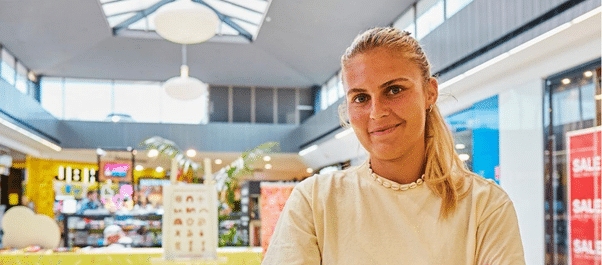The ARA team gathered this morning to mark the importance of NAIDOC Week. We were joined by First Nations artist and educator, Bayley Mifsud / Merindah-Gunya who recently worked in collaboration with the ARA to produce custom artwork ‘Meerta’, meaning ‘Stand up’.
NAIDOC Week is an opportunity for all Australians to learn about First Nations cultures and histories and participate in celebrations of the oldest, continuous living cultures on earth.
This year, the ARA has been proud to take an active role in the recognition of First Nations voices, through the showing of public support for the Voice campaign. The ARA has created a Reconciliation support page to assist in the understanding of not only the legislative process ahead, but also what the Voice will have the power to do in Australian parliament.
On this page, you will also notice a very beautiful piece of artwork acting as the banner, or welcome to the page. This artwork, titled ‘Meerta’ or ‘Stand up’ is the artwork that compliments out Reconciliation Action Plan, and has been painted by First Nations artist, Merindah-Gunya, or Bayley Mifsud.
Today we spoke with Bailey about her artwork and share parts of her conversation with our team.
Bailey, can you start off by talking about what NAIDOC Week means for you as a First Nations person? And, how important is the recognition of First Nations culture to you?
NAIDOC Week is a really exciting and important week to celebrate Aboriginal and Torres Straight Islander people, my people. It’s amazing that we have two weeks a year that we can educate and celebrate our people and culture. The first is Reconciliation Week, and then followed by NAIDOC Week.
The theme this year ‘For Our Elders’ is really key to me. Each year the theme changes and allows me a new perspective to engage with the events. In Aboriginal communities we don’t just have a Mum and Dad as significant influencers. As we grow we have to take further responsibilities in our families and we earn these responsibilities as we grow.
How important is the recognition of the Voice to Parliament to you?
My Nan is 86 and she was born in a hut. She comes from a strong line of Aboriginal women. When the Police would come to take children away my Nan would argue back so much they left. Aboriginal people respect my Nan.
So the Voice is important in that not that long ago my Nan didn’t have the same rights as other people in this country. The recognition of rights that comes with having a birth certificate from this country.
I believe Aboriginal people should be able to make decisions for other Aboriginal people.
At the moment around 70% Aboriginal people support the Voice, however there is still a lack of trust with some Aboriginal people.
Now let’s talk about the artwork ‘Meerta’ or ‘Stand up’ you have painted to recognize our Reconciliation Action Plan. Can you talk us through the process of designing the piece, and the process you go through to begin painting?
This artwork was a collaboration with the ARA, where we got together and discussed the story style and colours. The ARA team referenced other artwork they liked. They enjoyed viewing artwork that was balanced but not completely symmetrical. It was important to me that the artwork reflect the style of the team that created the ARA’s Reconciliation Action Plan.
Also, it didn’t actually start as a black and white painting, but along the creative journey I decided that the story was best adapted to suit our vision.
Could you talk us through the painting, what does it symbolise?
The painting is really designed around the concept of growth. Once people have come through their journey the ARA on the right side it symbolises the growth that we offer. The ‘journey’ lines are down the bottom and they look like rainbows and represent four different journey lines.
In Aboriginal culture a meeting place looks like circles. This is because Aboriginal people didn’t have buildings. They would commonly meet at a campsite or waterhole. The circles are symbolic of the ARA and the states and territories we represent and it is created in a contemporary style of artwork.
Also, in Aboriginal culture the artwork is created from a birds eye view. The larger circles are symbolic of people (imagine the imprint left in the sand when you stand up). They reference and form a communication on ‘what to do’ and how to take care of yourself and the country.
Learn more about the ‘Meerta’ artwork here: https://www.retail.org.au/meerta
View the ARA Reconciliation Action Plan here: https://www.retail.org.au/reconciliation





















